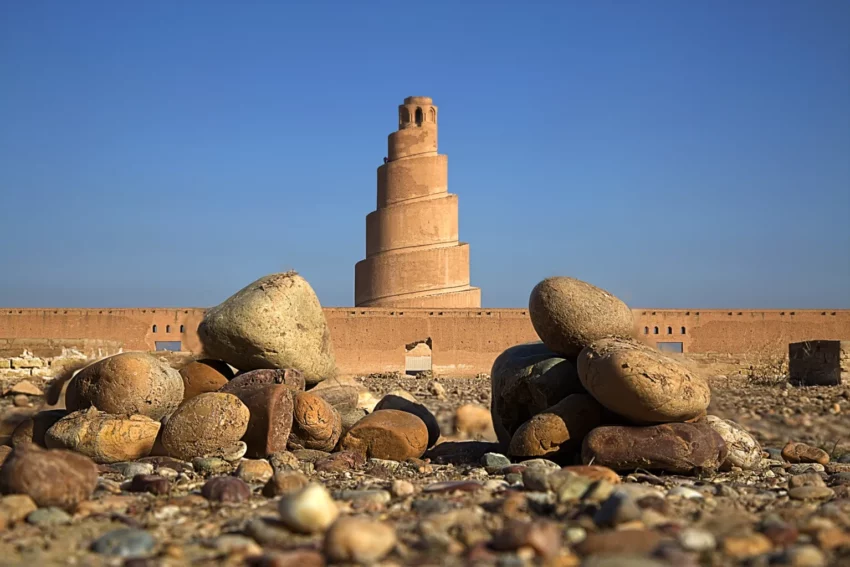The Great Mosque of Samarra: A Testament to Architectural Grandeur
The Great Mosque of Samarra, a marvel of 9th-century architecture, stands as a testament to the grandeur of the Abbasid era. Commissioned by Caliph Al-Mutawakkil and completed in 851, this mosque was once the largest in the world.
Get your dose of History via Email
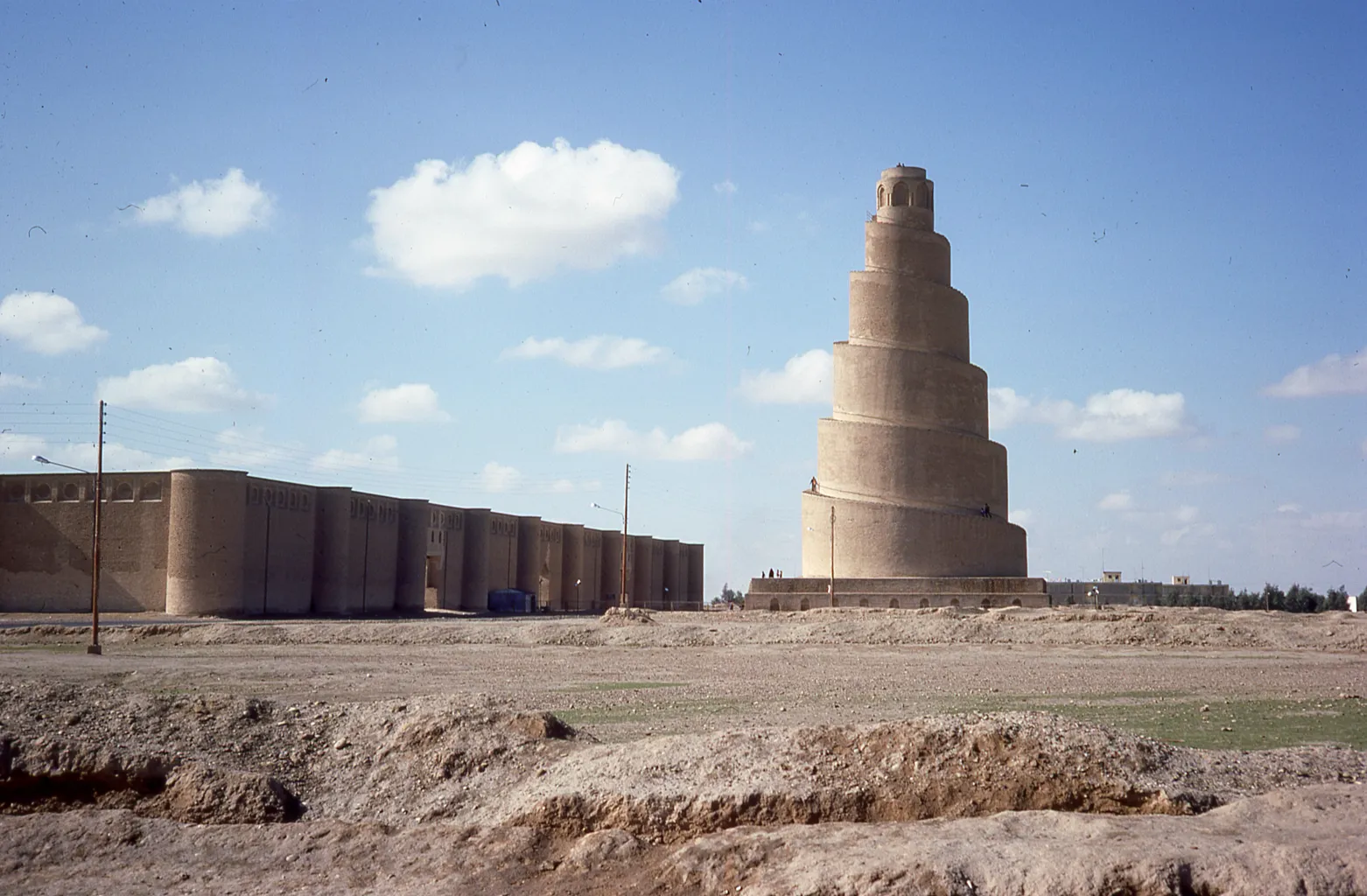
Historical Significance
Constructed between 848 and 851, the mosque is part of the Samarra Archaeological City, a UNESCO World Heritage Site since 2007. Al-Mutawakkil, known for his love of architecture, oversaw its creation. He hired artists and architects from across the Abbasid empire. The mosque, part of an expansion of Samarra, played a crucial role in transforming the city into a major center.
Architectural Marvel
The mosque’s most striking feature is the Malwiya Tower, a 52-meter-high minaret with a unique spiral design. This minaret, visible from afar, served both practical and symbolic purposes. Its spiral ramp allowed the muezzin to ascend for the call to prayer, while its towering presence symbolized the spread of Islam in the Tigris Valley.
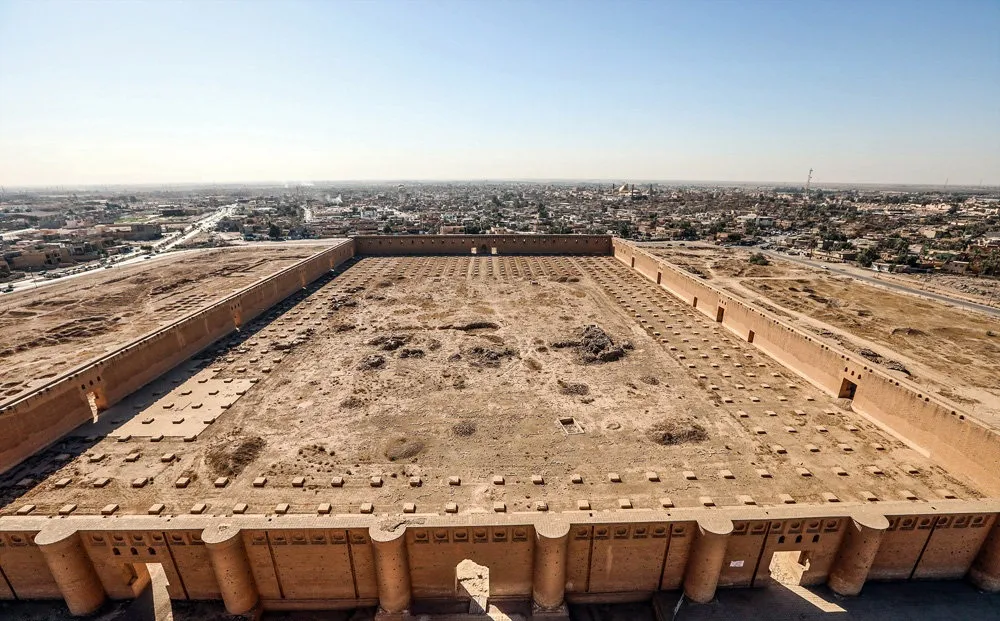
Design and Structure
The mosque’s layout includes a large courtyard surrounded by covered aisles. Baked brick walls with forty-four semi-circular towers support the structure. Inside, the mosque features 17 aisles and a total of 464 pillars supporting the roof, which stands 11 meters high. The walls were originally adorned with mosaics of dark blue glass and stucco carvings in floral and geometric designs.
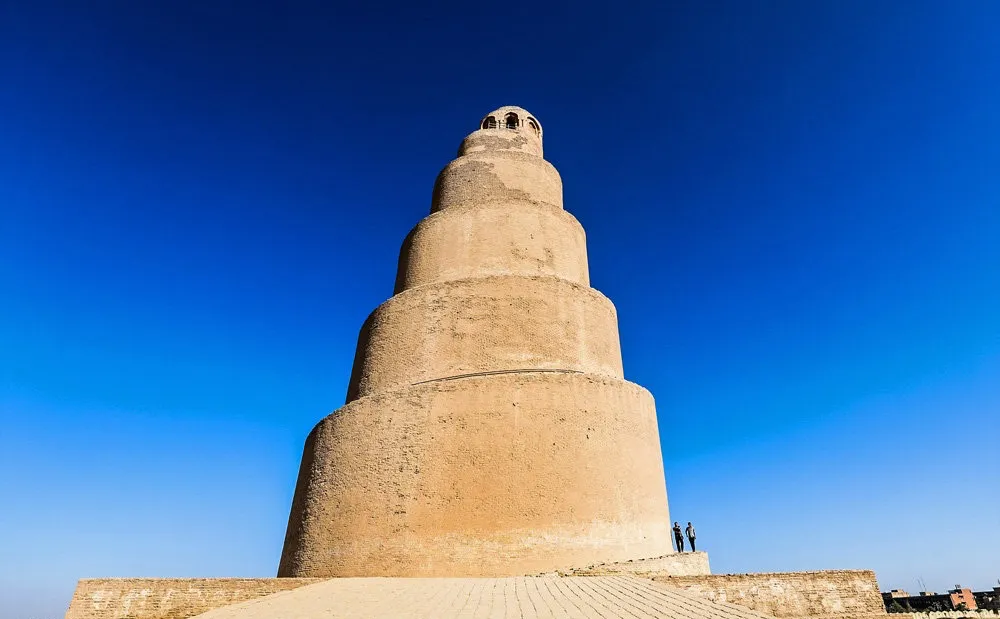
Influence and Legacy
The design of the Great Mosque of Samarra influenced Islamic architecture beyond its time. The Mosque of Ibn Tulun in Cairo, for instance, drew heavily from its design. Additionally, modern structures, such as the Chapel of Thanksgiving in Dallas, Texas, reflect the influence of the Malwiya minaret.
Modern Conservation Efforts
Though much of the mosque was destroyed in 1278 during Hulagu Khan’s invasion, efforts to restore it began in 1956. The Iraqi State Organization of Antiquities, in collaboration with historians and architects, undertook extensive restoration of the courtyard and the spiral minaret. However, in 2005, insurgents damaged the minaret further. UNESCO and the Iraqi government launched a project in 2015 to restore the site.
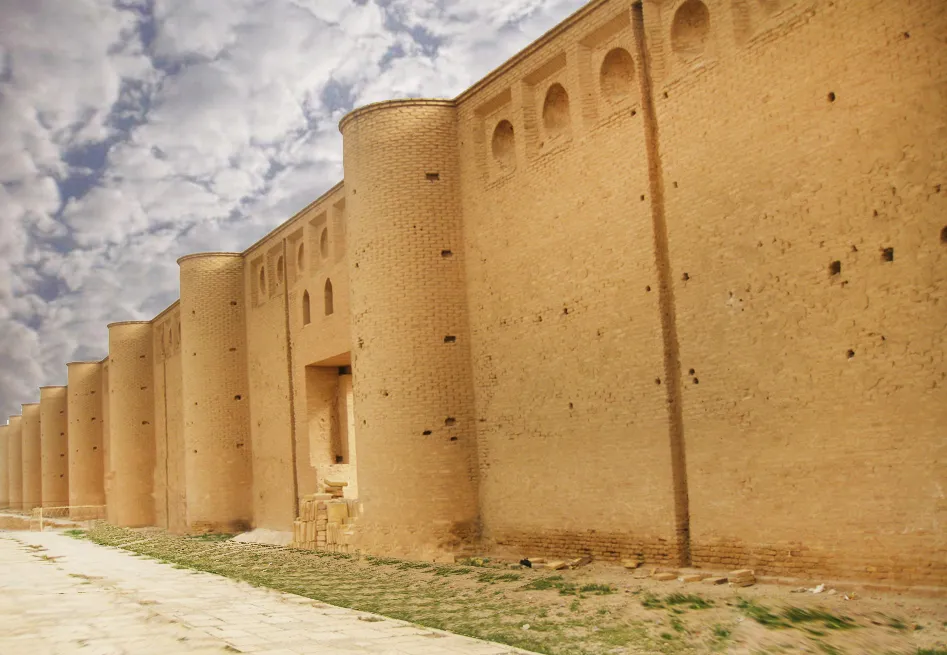
The Minaret: A Unique Feature
The Malwiya minaret’s spiral design is unique among Islamic minarets. Its construction from sandstone and the design possibly draw inspiration from Mesopotamian ziggurats. However, some scholars argue against this theory, suggesting influences from the Sasanian Empire’s architecture instead. Regardless, the minaret remains a focal point of Samarra’s skyline and a symbol of the city’s historical significance.
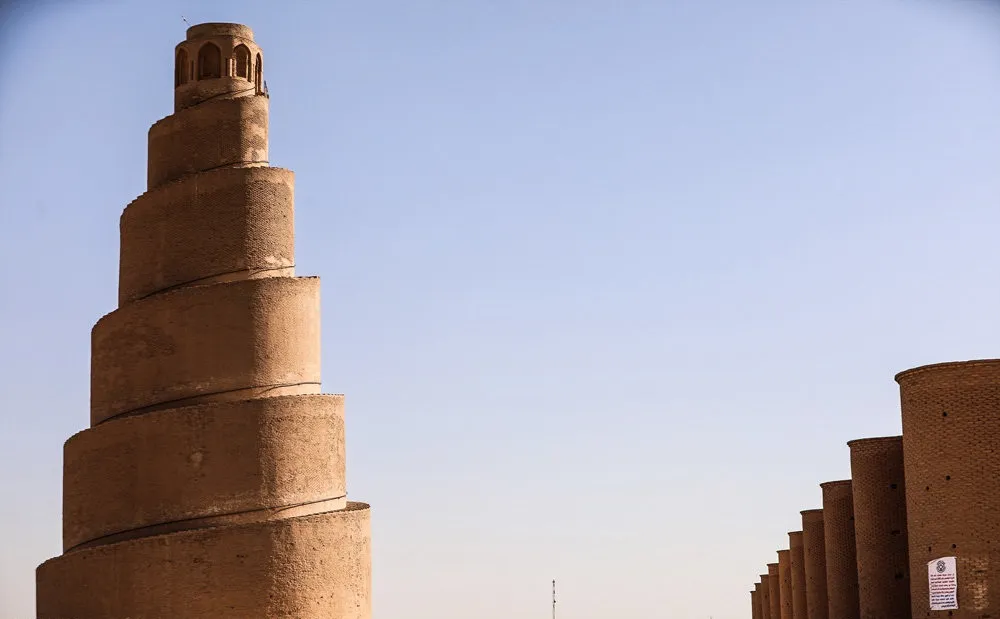
A Beacon of Islamic Heritage
The Great Mosque of Samarra, with its architectural innovations and historical importance, continues to captivate historians and visitors alike. Despite the challenges it has faced over the centuries, it stands as a beacon of Islamic heritage and a testament to the Abbasid era’s architectural achievements.
Sources:

